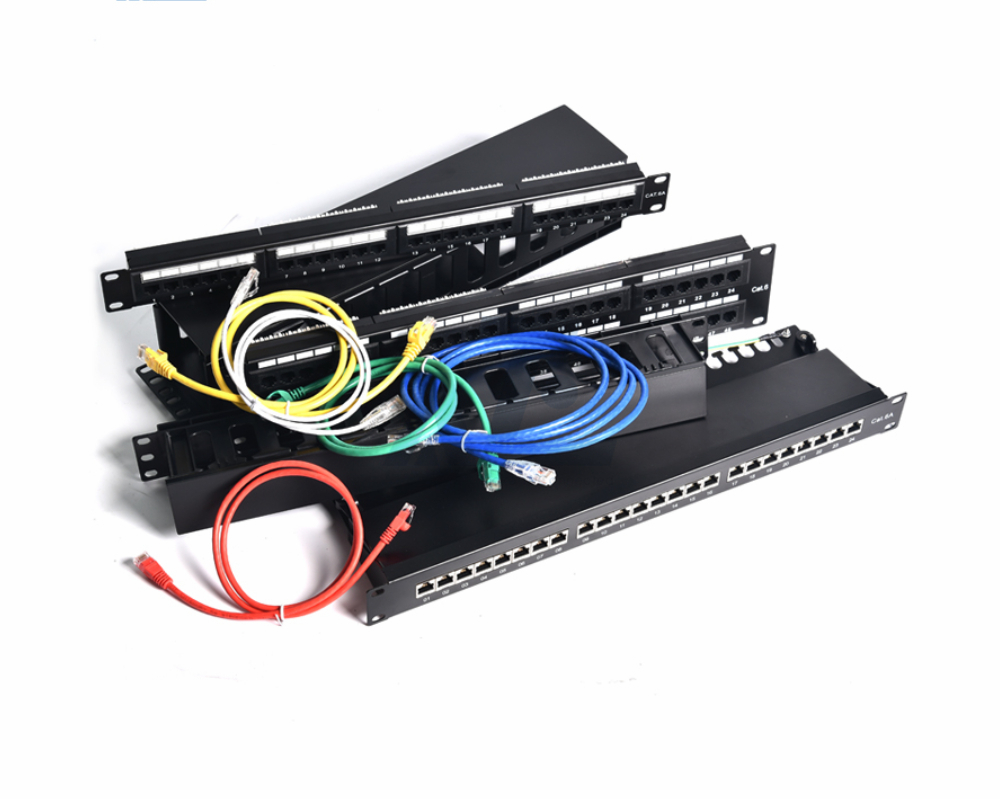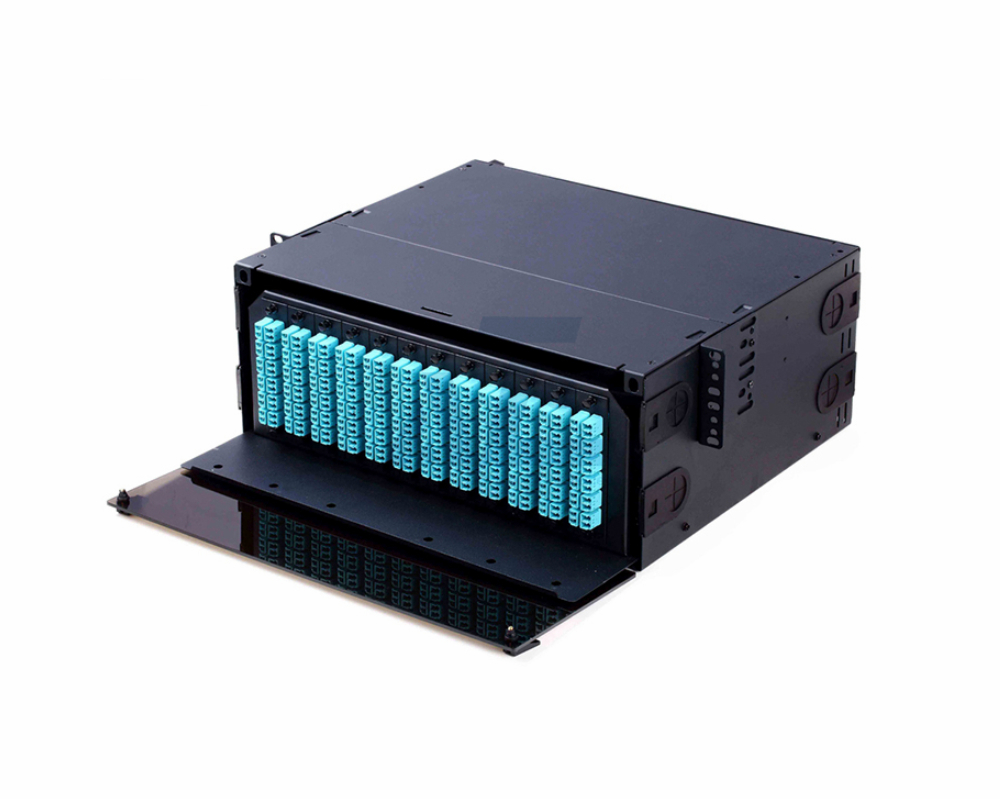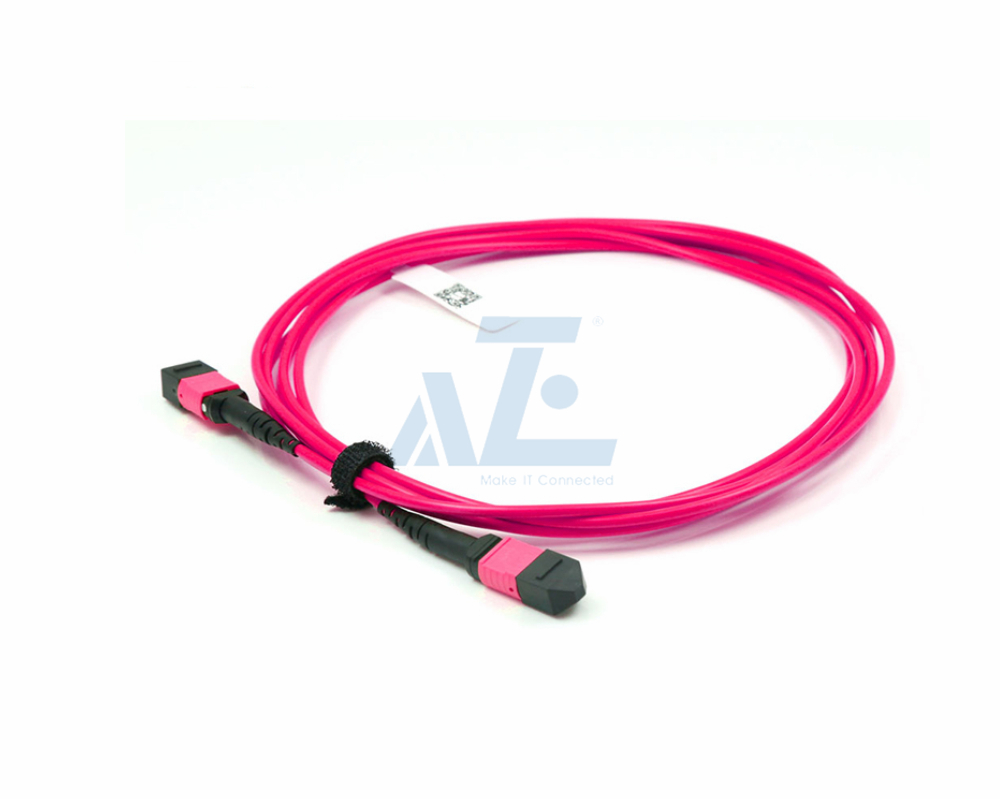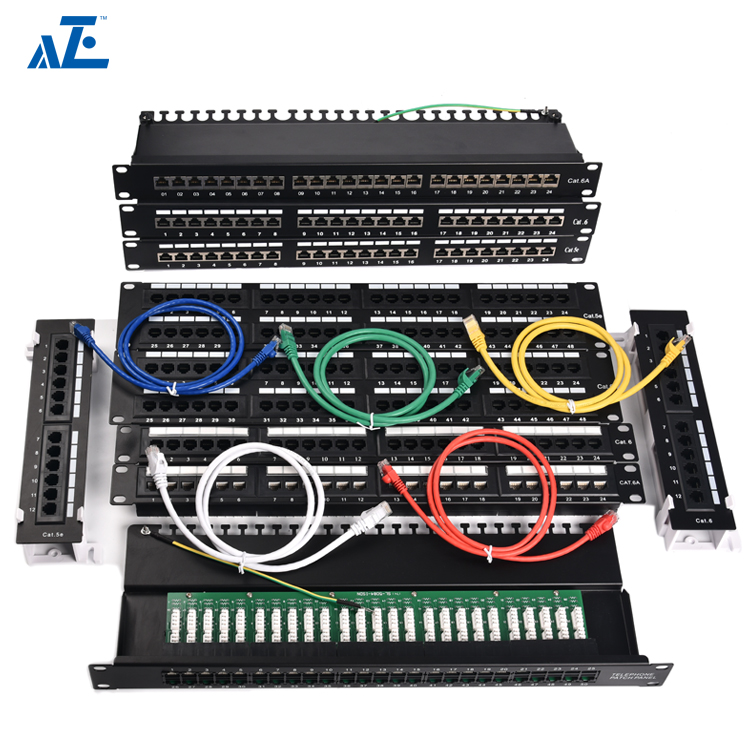Explore Copper and Fiber Connectivity Solutions with AZE !
- Cat5E,Cat6,Cat6A Cables
- OS2,OM2,OM3,OM4 Cables
- Copper/Fiber Patch Panels
Overview
Copper cables and fiber optic cables are two popular types of cables known to us. We are the one-stop-shop for all your network cabling needs. Find data cabling supplies, custom network cables, data center cables, and more.
-
Connectors
The point where cables connect to devices is critical to both the performance and safety of the product.
- Copper Cables
AZE offers 100% tested, reliable, and cost-effective copper patch cables in a variety of configurations. We are a Cat6 and Cat6A cable manufacturer and can order the other categories of copper cables as well. All Enconnex copper cables are riser-rated (CMR) cables and, therefore, exceed industry safety standards. Available in 24AWG and slim 28AWG sizes and custom-labeled to the port. Copper in itself is an excellent conductor of heat and electricity, and hence copper cables have been used in wiring since the days of analog landline telephones and even before. A copper cable has one of the most complex constructions with several layers such as
- A Conductor: This is a copper wire that triggers the flow of electrons
- An Insulation: This prevents contact between the conductor wires
- A Bedding: It protects the inner layers from outer layers
- An Armor: This assures mechanical protection
- A Sheathing: It encloses cable components, as well as assure environmental protection
- Copper Cabling
Once considered just "data cables", today's twisted-pair copper cables like Cat 6 are now being used to connect a huge variety of devices with not just data but power as well.
- Fiber Optic Cables
Fiber optic patch cables are fully tested and assigned a unique serial number for traceability. We offer OS2, OM3, and OM4 fiber patch cables in various cable colors and lengths. We use a superior rigid fixture polishing system for all fiber cabling designed for complex, multi-fiber applications. Additionally, we can terminate with LC, MTP/MPO, SC, SN, CS, or MDC connectors, up to 24 fibers. A fiber optic cable comprises fiber glass strands insulated with an outer covering that protects the strands from external parameters. Here, data is transmitted in the form of light signals or pulses. Each strand or core becomes a channel for light signals to be transferred. The glass covering around the strands reflect light inward facilitates the light signal to pass through various bends and twists in the network. Also, this increases the signal strength and bandwidth.
- Fiber Optic Cabling
Fiber optic cables comprise the backbone of today's internet and data networks, and are essential to transmitting large volumes of data at high speeds.
-
Fiber Patch Panels & MPO Cassettes
Our patch panels and cassettes are solutions built to maintain and improve the health and performance of your IT or data center cabling environment. Rack space is valuable and our solutions can help save space and improve the organization of your server rack or cabinet. We offer 48 port patch panels, 24 port patch panels, MTP cassettes, MPO cassettes, and LC cassettes in a variety of configurations.
-
Adapters & Accessories
We offer comprehensive data center network cabling solutions. Our fiber optic adapters allow users to interconnect and align two connectors of the same type with precision. Offering LC adapters, SC adapters, MPO adapters, and MTP adapters.
Application
As data centers and networking environments grow, organization and standardization of network cabling becomes more and more important.Unorganized and disparate data cabling environments are a risk to network performance. For that reason, structured cabling systems are more important than ever. Structured cabling, also known as "structured wiring” is an organized approach to building your cabling infrastructure. Structured cabling calls for a network cabling infrastructure that consists of a number of standardized smaller elements. When properly configured, a structured cabling system provides predictable performance with the flexibility to grow, scale, and adapt to changes in the networking environment.
- Network connectivity
- Structured Cabling system
- Data Center
Options
Fiber optic cables, copper cables, network transceivers, and more for a complete, ready-made cabling solution.
Buying Guides
Choosing single-mode or multimode fiber for high-performance data networking and telecommunications
Fast data transmission, thinner, lighter cables and long signal range are just a few of the benefits that make fiber optic cable a solid choice for corporate data networking and telecommunications.
What is a Fiber Optic Cable?
A fiber optic cable is a type of cable that uses light to transmit data over long distances. It consists of a core made of glass or plastic that is surrounded by layers of protective material, such as cladding. The core of the cable is where the data is transmitted as light signals, and the cladding helps to keep the light signals confined within the core. A coating and strength member protect the delicate fiber optic core from damage.
Fiber optic cables are used in a variety of applications, including telecommunications, internet service, and cable television. They offer several advantages over traditional copper cables, including faster data transmission speeds, immunity to electromagnetic interference (EMI), and the ability to transmit data over much longer distances. They are also more durable and less susceptible to damage than copper cables.
Fiber optic cables are available in various types, including single-mode and multimode fiber, and they can be used in various types of network configurations, including point-to-point, ring, and star. They are typically used for high-speed data transmission and are becoming increasingly important as demand for faster and more reliable wide area network connections continues to grow.
How to Choose Fiber Optic Cable
Fiber optic cable selection can be complex due to the variety of cable types, performance characteristics and more precise installation requirements. Start by determining requirements for the following:
- Distance
- Network Speed
- Cable Jacket
- Connectors
Once you have narrowed down your choices, you should also consider cost and future-proofing. Additional requirements will be driven by the needs of your specific application.
Fiber Optic Cable Types
Singlemode vs. Multimode
Fiber optic cable is available in two "modes": multimode or singlemode. Mode refers to pulses of light: multiple pulses or a single pulse.
Multimode fiber (MMF) cable is a type of fiber optic cable that is designed to allow multiple modes or pulses of light to propagate through the core of the cable. The relatively wide core allows it to carry multiple streams of data simultaneously at wavelengths of 850nm or 1300nm.
Due to high dispersion and attenuation rates, multimode fiber is commonly used in shorter distance data transmission applications, such as in office buildings, schools, and hospitals. The larger core size allows for the use of less expensive light sources, such as a light emitting diode (LED) or Vertical Cavity Surface Emitting Laser (VCSEL), which can be used to transmit data over distances of up to several hundred meters.
Multimode fiber is less expensive than singlemode fiber and is easier to install and maintain, but it has several disadvantages compared to singlemode fiber, including slower data transmission speeds, shorter transmission distances, and lower bandwidth capacity. It is also more susceptible to signal degradation and attenuation over longer distances.
Singlemode fiber (SMF) cable is a type of fiber optic cable that is designed to transmit light through the core of the cable. Compared to multimode fiber, singlemode fiber has a small diameter core, typically around 9 microns. This smaller core size allows the light signals to travel much further without spreading out, enabling singlemode fiber to transmit data over distances of up to several kilometers. It uses a laser diode as its light source and a bandwidth in the 1310 and 1550nm range.
Singlemode fiber is commonly used in high-speed data transmission applications, such as in telecommunications, internet service, and cable television. It is also used in high-bandwidth applications, such as data centers and medical imaging, where high-speed and long-distance transmission is required.
Singlemode fiber is more expensive than multimode fiber and requires specialized equipment for installation and maintenance, but it offers several advantages, including faster data transmission speeds, longer transmission distances, and higher bandwidth capacity.
Why is multimode fiber optic cable is designated 50/125 or 62.5/125?
These designations refer to the diameter of the core and cladding. For example, a 50/125 cable has a 50 micron core and a 125 micron cladding.
Simplex vs. Duplex
Simplex cable uses a single strand of fiber with a transmitter (TX) on one end and a receiver (RX) on the other. The cable is not reversible and supports only one-way transmission. It is typically used in monitoring applications where a sensor sends time-sensitive data back to a centralized system.
FAQ
What is the minimum bend radius for fiber optic cable?
For a cable that is not under pulling tension, the minimum radius should not be less than 10 times the cable diameter. For example, a multimode cable with an outside diameter of 3.0 mm has a minimum bend radius of 30 mm. The bend radius for a cable under tensile load may be greater. Refer to the cable's spec sheet for details.
What is the maximum tensile rating (pulling force) for fiber optic cable?
During installation, a fiber optic cable may be stressed when it is pulled through ductwork and around bends. Even pulling a cable from the payoff reel can potentially cause damage. After installation, cables can also be subjected to sustained pulling forces, for example, at cable drops or when run through risers.
The maximum tensile rating of a fiber optic cable is the highest pulling force that the cable can be subject to before the cable's fibers or optical properties are damaged. The cable manufacturer will typically provide two values: maximum tensile rating during installation and maximum tensile rating while in operation.
Fiber optic cable should ideally be pulled by hand in a smooth, steady motion. It should never be jerked, pushed or subjected to excessive twisting.
Fiber optic cable vs. copper cable: which is the best?
Fiber optic cables have several key advantages over traditional copper cables:
- Higher Bandwidth and Speed - Fiber optic cables can support higher data rates, and hence can carry more data than copper cables of the same diameter. This translates to higher speed and bandwidth, which is particularly beneficial for internet, television, and telephone services.
- Longer Distance - Fiber optic cables can transmit data over much longer distances without requiring signal boosters. The light signals in fiber optic cables don't degrade as quickly as electrical signals in copper cables, allowing data to be sent over longer distances without loss of quality.
- Better Signal Quality - Because fiber optic cables use light rather than electrical signals, they are less susceptible to electromagnetic interference. This can improve the quality of the data transmission, reducing errors and improving reliability.
- Security - It's more difficult to tap into a fiber optic cable to intercept the data it's carrying. The data is transmitted as pulses of light, which can't be easily intercepted without disrupting the entire communication link.
- Size and Scale - Fiber optic cables are thinner and lighter than copper cables. This makes them easier to install and allows more cables to be packed into the same physical space, which can be a big advantage in environments where space is at a premium.
- Durability - Fiber optic cables are more resistant to temperature fluctuations and are water-resistant, making them suitable for a variety of environmental conditions. They also don't corrode like copper cables can.
- Safety - Unlike copper cables, fiber optic cables do not conduct electricity, so they can be installed in areas with high electromagnetic interference, such as next to industrial equipment. This non-conductive nature makes them safer in terms of fire risks as well.
While fiber optic cables have many advantages, they also have some disadvantages compared to copper cables, such as typically being more expensive and requiring specialized skills to install and maintain. However, the benefits often outweigh these downsides, especially for applications that require high speed or long-distance data transmission.
Related Article
Get A Quote
While we strive to create custom products, please note that not all requests will qualify for a free prototype. Determination will depend on your project needs, quantity, and a final management review.
Let's get started, we are ready to work with you! Fill out the information below to send in your request and requirements and our team will be in touch shortly.




